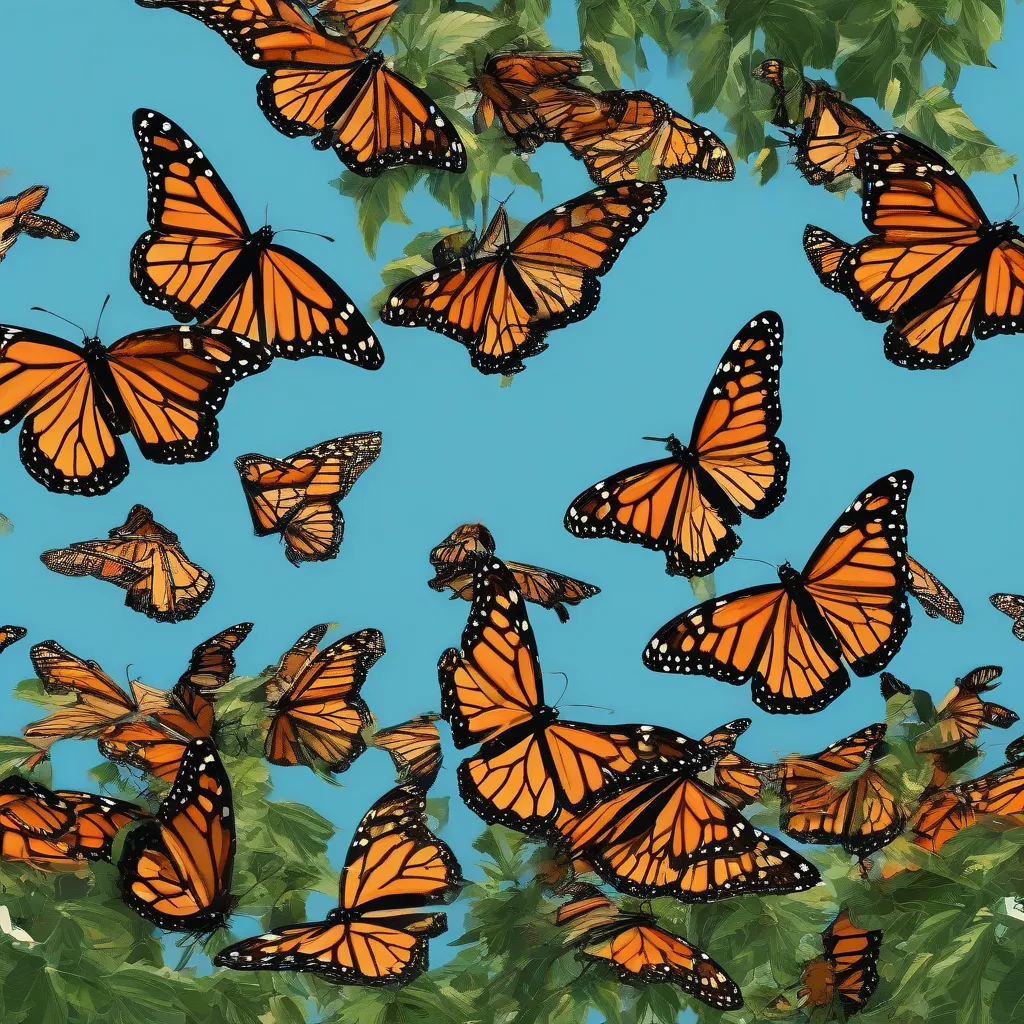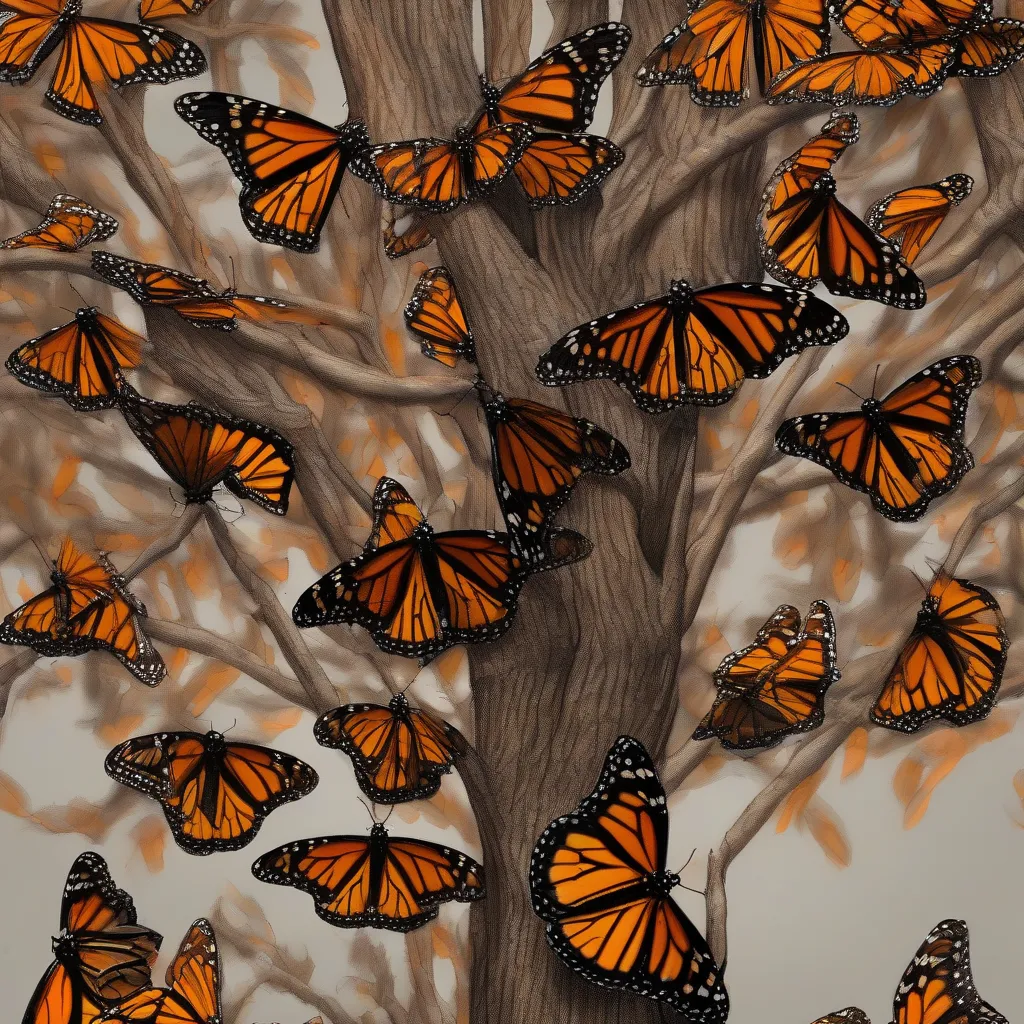Have you ever seen a monarch butterfly fluttering by and wondered about its journey? These delicate creatures are capable of an incredible feat: a multi-generational migration spanning thousands of miles! Join us as we delve into the fascinating world of monarch butterflies and uncover the secrets of their epic voyage.
The Monarch Butterfly’s Astonishing Journey: A Multi-Generational Relay
Each year, millions of monarch butterflies embark on a remarkable journey from their summer breeding grounds in North America to their overwintering sites in Mexico and California. What makes this migration even more extraordinary is that it takes multiple generations of monarchs to complete.
From Generation to Generation: A Journey’s Length and More
The distance a monarch butterfly travels depends on where it begins its journey. On average, monarchs travel between 1,000 to 3,000 miles each way.
- Eastern Monarchs: These butterflies, originating from the eastern United States and Canada, fly the farthest, reaching the Transvolcanic Mountains in central Mexico, a distance of over 3,000 miles. Imagine starting your journey in New York City and ending it in Los Angeles – that’s the equivalent of the eastern monarchs’ incredible flight!
- Western Monarchs: Starting from the western United States, these monarchs travel a shorter distance to overwintering sites along the California coast, covering around 500 to 1,500 miles. Picture a scenic drive down the Pacific Coast Highway – that’s the route these western butterflies take.
A Lifespan too Short, a Journey too Long: The Miracle of Multi-Generational Migration
The average lifespan of a monarch butterfly is only about 4-6 weeks. This incredible journey, however, takes much longer than a single lifespan. How do they do it? Through an amazing natural phenomenon: multi-generational migration.
It takes 3 to 4 generations of monarchs to complete the round trip. The final generation, born in late summer or early fall, is the “super generation” that makes the long journey south, overwinters, and then makes the return journey north in the spring.
 Monarch Butterflies in Flight
Monarch Butterflies in Flight
Navigating the Skies: A Monarch Butterfly’s Compass
The navigational prowess of monarch butterflies is nothing short of astonishing. These tiny creatures utilize a combination of cues to find their way across thousands of miles.
- Sun Compass: Monarchs use the position of the sun in the sky to orient themselves and maintain a southerly direction.
- Magnetic Compass: Recent research suggests that monarchs may possess a magnetic compass, allowing them to sense the Earth’s magnetic field and stay on course even on cloudy days.
- Landmarks: Scientists believe that monarchs also utilize landmarks, such as mountains, coastlines, and even the Earth’s magnetic field, to guide their migration.
Witnessing the Monarch Migration: A Bucket List Experience
Want to witness this incredible natural phenomenon firsthand? Several locations along the monarchs’ migratory route offer unforgettable experiences.
- Point Pelee National Park, Canada: Each fall, witness thousands of monarchs congregating at this southernmost point of Canada before crossing Lake Erie.
- Cape May, New Jersey: Experience the “Monarch Mecca” as these butterflies funnel through Cape May during their fall migration.
- Pacific Grove, California: Visit the Monarch Grove Sanctuary and witness thousands of monarchs clustering on eucalyptus trees during their winter stay.
 Monarch Butterflies on a Tree
Monarch Butterflies on a Tree
Planning Your Monarch Butterfly Adventure: Tips and Considerations
Here are some tips for planning a trip around the monarch butterfly migration:
- Timing is Key: The best time to witness the migration varies depending on location. Research the peak migration times for your chosen destination.
- Respect Wildlife: Always observe butterflies from a safe distance and avoid disturbing them or their habitat.
- Support Conservation Efforts: Consider donating to organizations dedicated to monarch butterfly conservation.
FAQs about Monarch Butterfly Migration
Q: How long does it take for monarch butterflies to reach their destination?
A: The entire migration can take several months. Each generation contributes to the journey, with the final generation completing the longest leg.
Q: Why do monarch butterflies migrate?
A: Monarch butterflies migrate to escape harsh winter conditions and find suitable breeding grounds.
Q: Are monarch butterfly populations declining?
A: Yes, monarch populations have been declining in recent decades due to habitat loss, pesticide use, and climate change.
Travelcar.edu.vn: Your Guide to Exploring the World
For more travel inspiration and resources, visit travelcar.edu.vn. We offer a wealth of information on destinations, travel tips, and more to help you plan your next adventure.
Don’t forget to check out our articles on other fascinating natural phenomena:
- The Northern Lights: A Guide to Witnessing Nature’s Light Show
- Whale Watching Around the World: Top Spots and Tips
Let travelcar.edu.vn be your guide as you explore the wonders of the natural world!